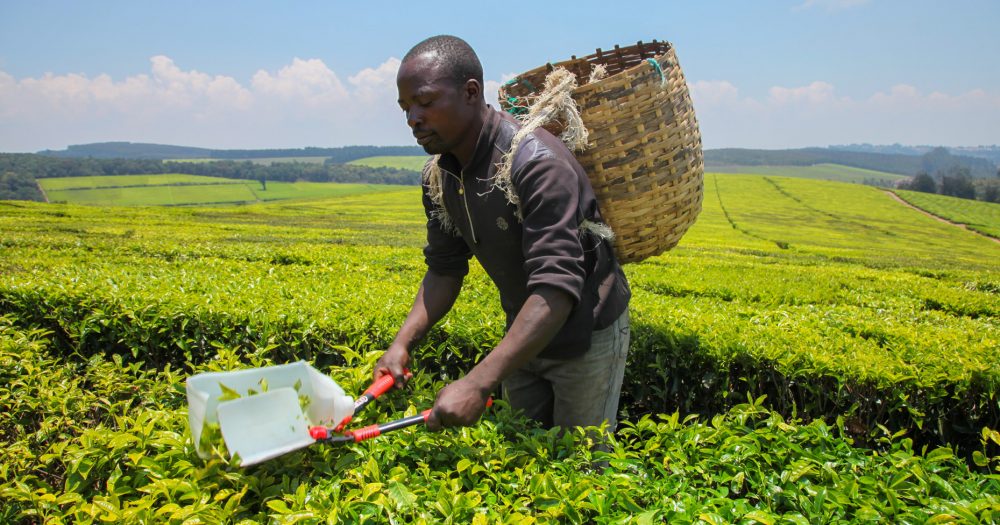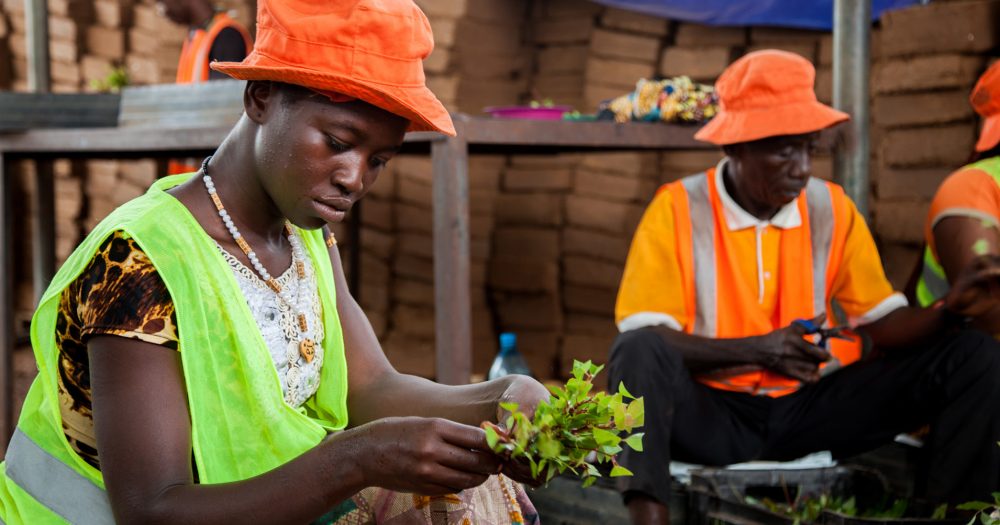Our investment
Description of the investment.
Description of the investment.
This counter-cyclical loan to NMB Bank Zimbabwe will help increase access to capital for agricultural exporters in Zimbabwe at a time when there is a significant US dollar funding gap, given the macroeconomic situation and withdrawal of commercial capital from the country.
The investment will allow the bank to support its customers to invest in capital expenditure and accelerate business growth. 30 per cent of the loan will be earmarked for climate-smart farming practices.
Impact information
Applies to investments made from 2019 onwards. The tabs in this section define what we expect to achieve through the investment, assessing the potential impact of the investment against six dimensions of impact. You can find more details on our methodology of assessing impact here.
Applies to investments made from 2019 onwards. The tabs in this section define what we expect to achieve through the investment, assessing the potential impact of the investment against six dimensions of impact. You can find more details on our methodology of assessing impact here.
What?
| Impact |
|---|
|
|
|
How?
| How? |
|---|
|
Who?
| Stakeholder | Geography | Characteristics |
|---|---|---|
| Owners, employees, and suppliers of exporters |
Zimbabwe |
Owners are higher income earners in the agri sector. Employees and suppliers (of whom 50 per cent are smallholder farmers) are mostly agricultural labourers (pipeline average 62 per cent female but in many cases 80 per cent female), with most workers in the proposed pipeline earning around minimum wage. |
| Planet |
Zimbabwe faces ongoing climate shocks, with drought the most significant climate-related risk given 70 per cent of the population is dependent on rain-fed farming. For the 2023-24 season, El Niño phenomenon is predicted to negatively impact agricultural productivity. |
How much?
| Scale | Depth/Duration |
|---|---|
|
The loan will be taken up by 10-15 companies with an employee base range from 250-5000. |
Depth and duration will vary and likely to be most significant for low-income employees and suppliers who experience secure/stable incomes, improved safety at work and new skills learned. Duration and depth will be significant where agri practices change and improve resilience to climate change/weather shocks. |
Contribution/additionality
| Contribution/additionality |
|---|
|
Risk
External RiskThe macro environment (political uncertainty, food crisis), and regulatory/monetary policy could affect the impact, including repatriation of funds. Execution RiskRisk linked to ambitious agri book growth, key person risk, sector vulnerabilities and strategic plans, and highly linked to commercial risk. Alignment RiskRisk linked to failing to deliver a pipeline of borrowers that is aligned to the strategy. |
Environmental and social information
-
Environmental and social summary
A high-level description of the environmental and social aspects of the investment. This may include a summary of key environmental and social risks identified during environmental and social due diligence (ESDD); key elements of an environmental and social action plan (ESAP); or ways in which we plan to support the investee improve environmental and social standards, such as through their environmental and social management system (ESMS); as well as any other priority areas agreed with the investee.
-
Environmental and social risk
A risk category rating, which indicates the level of environmental and social risk associated with an investment. For an explanation of the categorisations used, see here. We consistently provide an environmental and social risk category for all investments screened from 2023 onwards.
Environmental and social summary
The investment is rated as high risk based on NMB’s exposure to clients operating in sectors such as agriculture, mining, and construction. We agreed on an ESAP which required broad improvements to be made to NMB’s ESMS, external Grievance Mechanism, internal Human Resources and Safeguarding Policies.
Environmental and social risk
High
Reporting and Complaints Mechanism
The Reporting and Complaints Mechanism allows anyone outside BII to report alleged breaches of the business integrity or environmental and social provisions of BII’s Policy on Responsible Investing. This includes breaches made by BII, a BII investee, or a portfolio company of a fund in which BII has invested. The Reporting and Complaints Mechanism Rules are available here. Reports and complaints can be submitted by email to reportsandcomplaints@bii.co.uk or by mail. See more details on our Reporting and Complaints Mechanism here.
For any other general enquiries contact us at enquiries@bii.co.uk
-
Key facts
- First published
:
When the investment was first published on the website database.
- September 2024
- Last updated
:
When the last quarterly update of the website database occurred.
- December 2024
- Project number
:
An identifier number shared by investments in the same project.
- D6189
- Status
:
The current status of the investment (green flag for active and red flag for exited).
- Active
- Region
:
The geographical region where the country is located. We currently invest in Africa, South Asia, South East Asia and the Caribbean. In 2023, BII’s investment mandate was extended allowing it to invest in regional funds linked to Ukraine, with the majority of activity expected to begin post-war. Investments outside these regions were made prior to 2012 under previous investment mandates.
- Southern Africa
- Country
:
The countries where the investment delivers impact. Where impact is delivered in multiple countries, this is indicated.
- Zimbabwe
- Sector
:
We prioritise those sectors that facilitate development and need our capital the most. Our priority sectors contribute towards many of the Sustainable Development Goals. They range from investing in the power infrastructure that will provide people with better access to electricity, to investing in financial institutions that direct capital to the individuals and businesses that need it the most.
- Financial services
- Sub sector
:
The sub-sector that the investment is made into; this provides a more granular level of detail than the ‘sector’ information
- Banks
- Investment type :
- Debt
- Start date :
- June 2024
- Amount :
- $10m
- Currency of investment :
- USD
- Domicile
:
The company or investment fund’s place of incorporation.
- Zimbabwe
We provide capital in the following ways: directly – through direct equity, direct debt, guarantees and other non-intermediated financial instruments; and indirectly – principally through investment funds.
For direct investments and fund investments, this is the date BII committed capital to the investments. This is typically the date on which legal agreements are signed by all parties.
For the portfolio companies of our fund investments, this is the date (either the month or the quarter) on which the fund committed capital to the portfolio company.
For direct equity investments, this is the date at which British International Investment exited the investment.
For debt investments, this is the date at which the final debt repayment was made.
For funds, this is the date at which the fund was terminated.
For underlying fund investments, this is the date at which the fund manager exited the investment.
The total amount committed, per financial instrument, per investment, on the date BII becomes subject to a binding legal obligation to provide funding or assume a contingent liability. This information is provided in US dollars.
For direct investments, this is the amount that BII has committed to the business or project. For fund investments, this is the amount BII has committed to the fund.
The currency in which the investment was made.
- Climate finance
:
Indicates whether the investment is climate finance qualified or partially climate finance qualified and the type of climate finance (adaptation, mitigation or both). We define climate finance using the multilateral development bank (MDB) and the International Development Finance Club (IDFC) Common Principles climate finance methodology. See Common Principles for Climate Mitigation Finance Tracking and Common Principles for Climate Change Adaptation Finance Tracking. We provide the climate finance qualification and type for commitments from 2020 onwards, which is when we launched our Climate Change Strategy.
- Partially qualified
- Climate finance type
:
Mitigation: Indicates investments which, by avoiding or reducing GHG emissions or increasing GHG sequestration, contributes substantially to the stabilisation of GHG concentrations in the atmosphere – at a level which prevents dangerous anthropogenic interference with the climate system consistent with the long-term temperature goal of the Paris Agreement
Adaptation: Indicates investments aimed at preventing or reducing the risks or vulnerabilities posed by climate change and increasing climate resilience. This includes both adapted activities and enabling activities to manage and reduce physical climate risks
Dual: Indicates investments directed towards activities contributing to both climate change mitigation and climate change adaptation and meeting the respective criteria for each category
The climate finance type of the investment is determined at time of commitment.
-
- Mitigation
- 2X Gender Finance
:
Indicates whether the investment is ‘2X qualified’ using the 2X Challenge criteria. You can find out more here. It only applies to investments made from 2018 onwards, when the 2X Challenge was first launched.
- Partially qualified
- First published


